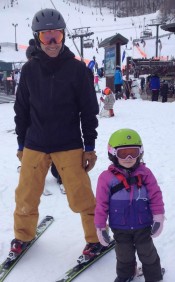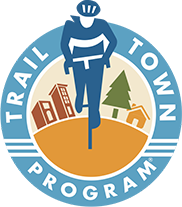 I am a skier, cyclist and overall outdoor enthusiast. Growing up in the Allegheny Mountains and Laurel Highlands of west central Pennsylvania, I have seen first hand how destination recreational venues like ski areas, trails, rivers and lakes create economic opportunities. Of course they do, but too often tourism is relegated to a second or third tier position in many economic development strategies.
I am a skier, cyclist and overall outdoor enthusiast. Growing up in the Allegheny Mountains and Laurel Highlands of west central Pennsylvania, I have seen first hand how destination recreational venues like ski areas, trails, rivers and lakes create economic opportunities. Of course they do, but too often tourism is relegated to a second or third tier position in many economic development strategies.
The fact is that tourism is a major economic development driver. This is especially true for rural regions and mountain main street communities – towns where economies were historically linked to raw material extraction and processing. Places like these are often fortunate to be in close proximity to outdoor recreational destinations. They have the ability to attract tourism dollars as either part of or the focal point for their overall economic future. This reality has been recognized and encouraged by The Progress Fund, a non-profit organization serving both mountain, trail, and other recreational communities in western Pennsylvania, Maryland and West Virginia for many years now. The organization has provided financing and business coaching to help local small businesses create jobs for the region.
The Progress Fund and Fourth Economy share a common vision and experience – that is that outdoor destination assets can provide a pathway towards significant economic transformation. Not only can they provide starting points for careers in the hospitality and tourism industry for local residents, they also present an opportunity to introduce a community to potential outside investors and small business entrepreneurs – turning visitors into residents and business owners.
Some examples of smaller non-college towns that have successfully and strategically leveraged outdoor recreation venues for greater tourism and economic impact include Glenwood Springs, Colorado – Frisco, Colorado – Camden, Maine – Watkins Glen, New York – Whitefish, Montana – Heber, Utah and Taos, NM. So what can we learn from these and other mountain communities?
The Challenge: Extend the Experience to Main Street
Regional tourism branding and marketing efforts are common across the country. Generally these efforts are led by a tourism agency serving as a clearinghouse for activities, programs and assets found within a defined geography. These efforts serve important roles to include establishing a common brand or theme for the region, asset mapping and adding national marketing capacity for its participating members.
Too often though, main street businesses and communities located near the destination attractions (ski resorts, rivers, trails and lakes) do not fully leverage or benefit from the regional platform and message. While the communities are represented in printed listings and websites, there is often no visible or cultural connection between the town and the outdoor recreational experience. In order to translate the economic impact to these surrounding towns, the visitor must clearly recognize that these towns are part over the overall destination, ultimately encouraging them to extend their experience and dollars to the main streets.
The Importance of Engagement: Education – Communication – Place
Developing this connection does not happen overnight. It takes time, outreach and ultimately investment by the local businesses and municipalities. But if done correctly, visitors will begin to identify and associate the towns and main streets with the regional brand and the overall visitor experience. The town then gains the critical value proposition that distinguishes them from all the rest. The Progress Fund is tackling this challenge on several levels.
Education
Mutual awareness between main street businesses and destination tourism venues is critical. While it seems like a basic idea, too often the disconnect starts here. The shop owner and employees are not aware of or never experienced the types of activities that exist within the area and how those activities can benefit their business. Before it can happen organically, a formal educational and information exchange effort should be created. This can be accomplished through formal site visits, events and online information feeds where shop owners, employees and recreational representatives share programs, understand the visitor profile and services offered at the various destination locations.
Communication
Establishing a common language among main street shop owners, their employees and recreational destination operators and their employees is another critical step. Employees trained to ask questions of guests like, “Have you been on the mountain today? on the Water? at the Festival?… are the types of questions that help to reinforce the regional brand and connection to key assets for the visitor, further driving spending and word of mouth marketing. Destination and tourism brochures also need to visible to customers and reviewed by shop owners and employees. Each small element further defines the region and extends the visitor experience.
Place Making
Main streets have to appear to be open for business and welcoming to travelers or residents who might easily just pass through. Lights on, business hours during high traffic times and weekends, use of side walks, traffic calming banners and signage at human scale that connect to and reinforce the brand are all part of the physical place making common with main streets driven in part by tourism dollars.
These three elements must all be present, complement and reinforce the other in order to maximize the visitor experience and the investment. It takes an active planning and educational process with regular check in points and training. Overtime, this process should also help to identify policy or other barriers that may limit economic growth. Targeted programming, education and funding are key elements for success.
About the Author and Fourth Economy Consulting
 Stephen is co-founder and Vice-President of the national economic development firm, Fourth Economy Consulting. The firm specializes in market analysis, economic impact studies, strategic planning, site selection, and assessments for communities and economic development organizations across the country. Stephen works to identify organizational and community place-based assets, matching them with new market opportunities. He brings more than 24 years of management and economic development experience in both the public and private sector. He has researched, presented and written extensively on the success factors that contribute to sustainable and growing economies. An avid skier and cyclist, Stephen lives in the Pittsburgh region with his wife Jeria and their 4-year old daughter (and skier of course), Ella.
Stephen is co-founder and Vice-President of the national economic development firm, Fourth Economy Consulting. The firm specializes in market analysis, economic impact studies, strategic planning, site selection, and assessments for communities and economic development organizations across the country. Stephen works to identify organizational and community place-based assets, matching them with new market opportunities. He brings more than 24 years of management and economic development experience in both the public and private sector. He has researched, presented and written extensively on the success factors that contribute to sustainable and growing economies. An avid skier and cyclist, Stephen lives in the Pittsburgh region with his wife Jeria and their 4-year old daughter (and skier of course), Ella.

